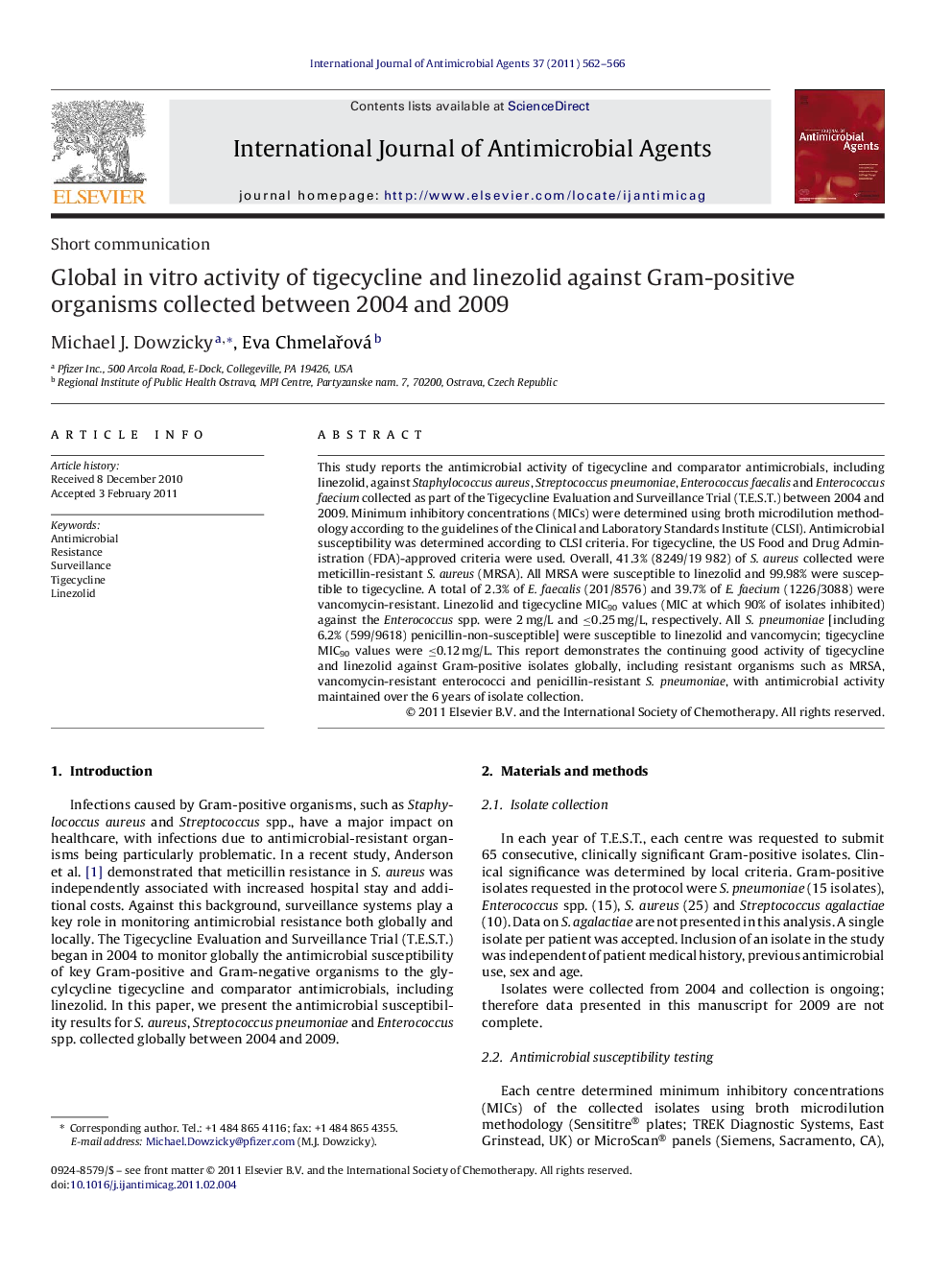| Article ID | Journal | Published Year | Pages | File Type |
|---|---|---|---|---|
| 3359639 | International Journal of Antimicrobial Agents | 2011 | 5 Pages |
This study reports the antimicrobial activity of tigecycline and comparator antimicrobials, including linezolid, against Staphylococcus aureus, Streptococcus pneumoniae, Enterococcus faecalis and Enterococcus faecium collected as part of the Tigecycline Evaluation and Surveillance Trial (T.E.S.T.) between 2004 and 2009. Minimum inhibitory concentrations (MICs) were determined using broth microdilution methodology according to the guidelines of the Clinical and Laboratory Standards Institute (CLSI). Antimicrobial susceptibility was determined according to CLSI criteria. For tigecycline, the US Food and Drug Administration (FDA)-approved criteria were used. Overall, 41.3% (8249/19 982) of S. aureus collected were meticillin-resistant S. aureus (MRSA). All MRSA were susceptible to linezolid and 99.98% were susceptible to tigecycline. A total of 2.3% of E. faecalis (201/8576) and 39.7% of E. faecium (1226/3088) were vancomycin-resistant. Linezolid and tigecycline MIC90 values (MIC at which 90% of isolates inhibited) against the Enterococcus spp. were 2 mg/L and ≤0.25 mg/L, respectively. All S. pneumoniae [including 6.2% (599/9618) penicillin-non-susceptible] were susceptible to linezolid and vancomycin; tigecycline MIC90 values were ≤0.12 mg/L. This report demonstrates the continuing good activity of tigecycline and linezolid against Gram-positive isolates globally, including resistant organisms such as MRSA, vancomycin-resistant enterococci and penicillin-resistant S. pneumoniae, with antimicrobial activity maintained over the 6 years of isolate collection.
